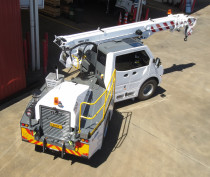The crane may be one of the most important discoveries in the world of transportation and construction.
Credit to introduce them to the world go to the Ancient Greeks who then use the power of the beasts of burden to set the crane into action.
Of course, we have come a long way since then and most cranes today use a hydraulic system, the internal combustion engine and the motor to do the job. If you're looking for a canes in your area, you can search a query 'cranes for sale' in search engine.
Enabling people to easily haul and objects that are lower by almost ten times the size of them, the crane has been used in almost every sector that may involve transportation.

Whether it's on land or in water, it is only possible to carry out a number of important activities without the use of cranes. By the way, there are two types of cranes are worth discussing at this point the truck-mounted cranes and marine cranes.
All aboard trucks
Tow truck falls in the category mobile cranes. This crane remained on the truck to allow their movement from one location to another.
These cranes are often separated into two parts above and below. The lower and upper consists of a carrier including a blast doing all the lifting.
The two sections are attached with a turntable that allows the movement of the boom. This crane typically uses hydraulic pumps to operate and move heavy objects around.
The advantage of using a truck-mounted crane is a mobile phone that transportation of the crane itself becomes easier.
However, due to restrictions by law, there may be times when the crane needs to be dissembled to meet weight specifications.
In such conditions, the balancer usually transported by a separate truck. In some large cranes, the whole boom can be dropped during the trip.
The only concern with this crane is the danger of tipping due to swinging of the weight. This crane can lift loads ranging from 14.5 short tons to 1,300 tons short. Therefore, excessive care must be taken to move objects without tipping the whole unit more.